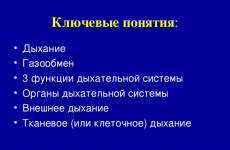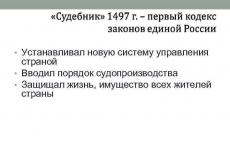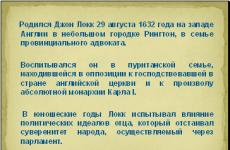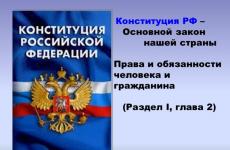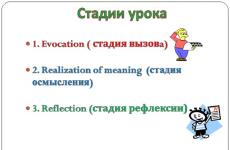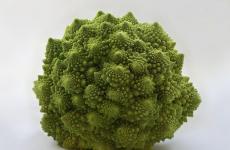Bianca biography for elementary school presentation. Summary of the lesson using the presentation “To children about Vitaly Bianchi. On a light wicker basket. "Forest houses"
Community of mutual assistance of teachers website Presentation competition "Great people of Russia" Forest storyteller Life and work of Vitaly Bianki Dolozova Olga Ivanovna teacher of Russian language and literature MKS (C) OU school number 10 VIII type Stupino, Moscow region

Slide 2
Bianchi wrote about the forest for thirty-five years. This word was often sounded in the titles of his books: "Forest houses", "Forest scouts". Bianchi's stories, stories, and fairy tales in a peculiar way combined poetry and precise knowledge. He even called the latter in a special way: fairy tales. There are no wands or running boots in them, but there are no fewer miracles. Bianchi could tell about the most unprepossessing sparrow that we are only surprised: it turns out that he is not at all simple. The writer managed to find the magic words that "cast the spell"

Slide 3
In the summer, the Bianchi family left for the village of Lebyazhye. Vitaly Bianki was born in St. Petersburg on January 30th Here Vitya first went to the present (February 11) 1894. There was a Singing forest trip. his surname was then 5-6 years old. Since those emules from the ancestors of the Italians. Perhaps from them it became for him a magical land, paradise. and the interest is carried away, From father - to forest artistic life made nature. his passionate bird scientist - the explorer's talent as a hunter. No wonder the first gun was presented to him in so much everything, he loved "that breathes, and for 13 years. Interest And he also poetry. Blooms. One time grows." The interests of the curator were different, the collection was the same - there was education. directly opposite the museum, and children - three sons - often visited its halls.

Slide 4
First - a gymnasium, then - the Faculty of Natural Sciences at the university, later - classes at the Institute of Art History. And Bianchi considered his father to be his main forest teacher. It was he who taught his son to write down all observations. After many years, they turned into fascinating stories and fairy tales.

Slide 5
For four years, Bianki took part in scientific expeditions along the Volga, Ural, Altai and Kazakhstan. In 1917 he moved to Biysk, where he worked as a teacher of natural history and organized a local history museum. In 1922 he returned to Petrograd. By this time, he had accumulated "whole volumes

Slide 6
The need for an artistic embodiment of knowledge about wildlife made Bianchi a writer. In 1923 he began to publish the phenological calendar in the Leningrad journal Sparrow (later New Robinson). This publication became the prototype of his famous Lesnaya Gazeta (1927).

Slide 7
Bianchi's first published children's story, Whose Nose Is Better? (1923). The heroes of the story of the bird Tonkonos, Krestonos, Dubonos and others resembled fairy-tale heroes, Bianchi's narrative manner was full of accurate observations and humor.

Slide 8
Bianchi viewed his work as a "self-instruction manual of love for nature." He wrote more than 30 fairy tales about nature, including such classics as "The First Hunt" (1923), "Who Sings What" (1923), "How the Ant Was Hurrying Home" (1935), Trapper's Tales (1937), etc. ...

Slide 9
Some of them ("Orange Neck", "The Ant's Travel", "Sinichkin Calendar", etc.) have been used as cartoons.

Slide 10
Bianchi also wrote thematic cycles "Mouse Peak", 1926, "Sinichkin Calendar", 1945, etc.

Slide 11
Shortly before his death, Bianchi wrote in the preface to one of his books: “I have always tried to write my fairy tales and stories so that they would be accessible to adults. And now I realized that all my life I have been writing for adults who have kept a child in their souls. " Died in Leningrad on June 10

Slide 12
For 35 years of creative work, Bianchi has created more than 300 short stories, fairy tales, novellas, essays and articles. All his life he kept diaries and naturalistic notes, answered many letters from readers. His works have been published with a total circulation of more than 40 million copies, translated into many languages of the world.

Slide 13
Quiz "Guess by the passage" To check the answer, click on the hedgehog in the lower left corner. To go to the next slide, go to the titmouse in the upper right corner.

Slide 14
He had a very thick head, a huge mouth, and protruding eyes covered with skin. And he was all sinewy, awkward. Mukholov said: -I don't like this freak. Let's throw him out of the nest! -What you! What you! - Pestrushka was frightened. - It is not his fault that he was born that way. "Cuckoo"

Slide 15
The Puppy squealed, tail between his legs, turned - yes through the meadow, but into the gateway. Huddled into a kennel and is afraid to stick out his nose. And animals, birds and insects - all again got down to their business. "The first hunt"

Slide 16
Now he went to the bridegroom to choose a wife for himself. He was very handsome then in his festive spring dress. Every scale on him was silver, his back was blue, his belly and cheeks were bright red, his eyes were blue. "Fish House"

Slide 17
It’s very tiring for me, ”he says, to get food for myself. You work all day long, you work, you know neither rest nor rest, but you still live from hand to mouth. Think for yourself: how many midges you need to catch to be full. And I cannot peck the grains: my nose is too thin. "Whose nose is better?"

Slide 18
He raised his long beak, banged, rattled one half of it against the other - now quieter, now louder, now less often, now more often: a wooden rattle crackles, and that's all! I went so badly that I forgot about my breakfast. "Who sings what?"

Slide 19
Fu, how small you are! the sparrows were indignant. - The calendar is the work schedule of the sun for the whole year. The year is made up of months, and January is its first month, the nose of the year. It is followed by another ten months - as many as people have toes on their front paws: February, March, April, May, June, July, August, September, October, November. And the very last month, the twelfth, tail of the year - December. Remember? "Sinichkin calendar"

Slide 20
We set up a sail, put the mouse in a dugout boat and let it go with the flow. The wind picked up the boat and drove it away from the shore. The mouse clung tightly to the dry bark and did not move. "Mouse Peak"

Slide 21
Plants and animals, forests and mountains, seas, winds, rains, dawns - the whole world around us speaks to us with all voices…. There are people who translate these voices into our human language - the language of love for the full beauty and wonders of our universe. Vitaly Bianchi

Slide 22
Image sources http://www.vseodetyah.com/multi/orangevoe-gorlyshko-mpg/orangevoe-gorlyshko-mpg-large-1.jpg orange neck http://d1.endata.cx/data/games/17097/62_56473262115 .jpg ant adventures http://www.kinoru.ru/published/publicdata/KINORU1/attachments/SC/products_pictures/644916_1.jpg titmouse calendar http://www.ircenter.ru/files/products/pics/60914/fullsize /28976.jpg forest newspaper http://old.prodalit.ru/images/540000/535752.jpg whose nose is better http://www.libex.ru/dimg/1becd.jpg whose nose is better http: // server. audiopedia.su:8888/staroeradio/images/pics/002424.jpg whose nose is better http://www.interpres.ru/catalog/images/079482.jpg first hunt http://www.char.ru/books/1726815_Kto_chem_poet .jpg who sings what http://chtoby-pomnili.com/preview.php?width=max&dir=595&id=161738384.jpg with a gun http://chtoby-pomnili.com/preview.php?width=max&dir=595&id= 161738406.jpg bianki http://chtoby-pomnili.com/preview.php?width=max&dir=595&id=161738423.jpg grave http://disneya.net/files/news/11 9 / myshonok.pik.1.jpg pike mouse http://www.n-sladkov.ru/images/stories/bianki/bianki2.jpg with a dog http://nshubin.narod.ru/files/bianki.jpg bianki http://detizdat.ucoz.org/_ph/28/2/136978994.jpg Bianca books http://www.ruslania.com/pictures/big/9785170708314.jpg Bianca books http://www.kmrz.ru/ catimg / 37 / 379179.jpg Bianca books http://www.zlatoriza.ru/uploads/items/big/01-11748.jpg Bianca books http://lib.aldebaran.ru/books/bianki_vitalii/bianki_vitalii_lesnye_razvedchiki_sbornik/cover. jpg bianca books http://nav.uz/uploads/posts/2010-07/1279364827_image1.jpeg bianca books http://chtoby-pomnili.com/preview.php?width=max&dir=595&id=161738407.jpg titmouse calendar http : //img15.nnm.ru/e/d/3/9/7/158a581ce70afd375d8e41bbfb1_prev.jpg bianki http://shalomfilm.com/uploads/posts/2011-09/1316292903_d8cf4ea68347972ce4fd3da5ad1.jpg bianki .ru / a / a / 5/1/2 / bc3780e3dfeb7173e1604b42048_prev.jpg bianki http://www.edu54.ru/sites/default/files/userfiles/image/muravey1%281%29.jpg ant O

Slide 23
Sources of information http://shalomfilm.com/1772-vitalij-bianki-sbornik-knig.html biographical information http://chtoby-pomnili.com/page.php?id=595 biographical information http://www.aphorisme. ru / about-authors / bianki /? q = 4632 biographical information http://biografii.my1.ru/index/bianki_v_v/0-75 biographical information http://www.biografguru.ru/about/bianki/?q= 4632 biographical information http://lib.ru/TALES/BIANKI/kuku.txt cuckoos http://lib.ru/TALES/BIANKI/ohota.txt first hunt http://lib.ru/TALES/BIANKI/fishome. txt fish house http://lib.ru/TALES/BIANKI/ktopoet.txt who sings what http://lib.ru/TALES/BIANKI/nos.txt whose nose is better http://lib.ru/TALES/BIANKI /pik.txt pik mouse http://bridge.artsportal.ru/index.php?template=magazin_inner&id=88&magazine=5 titmouse calendar http://sitefm.ru/music.php?search=%D1%81%D0% BA% D0% B0% D0% B7% D0% BE% D1% 87% D 0% BD% D0% B0% D1% 8F% 20% D0% BC% D0% B5% D0% BB% D0% BE% D0 % B4% D0% B8% D1% 8F & page = 2 musical score
BIANKI VITALY VALENTINOVICH About the life and work of the writer
BIANKI V.V. (1894-1959) Vitaly Bianchi was born in St. Petersburg. The singing surname came from his Italian ancestors. Perhaps, from them and carried away, artistic nature. From his father - a scientist-ornithologist - the talent of a researcher and an interest in everything “that breathes, blooms and grows”.
My father worked at the Zoological Museum of the Russian Academy of Sciences. The collection curator's apartment was located directly opposite the museum, and children - three sons - often visited its halls. There, animals brought from all over the world froze behind glass showcases. How I wanted to find a magic word that would "revive" the museum animals. The real ones were at home: there was a small zoo in the keeper's apartment.
In the summer, the Bianchi family left for the village of Lebyazhye. Here Vitya went on a real forest trip for the first time. He was then five or six years old. Since then, the forest has become a magical land for him, a paradise.
His interest in forest life made him a passionate hunter. No wonder the first gun was presented to him at the age of 13. He was also very fond of poetry. At one time he was fond of football, even was a member of the gymnasium team. Interests were different, the same - education. First - a gymnasium, then - the Faculty of Natural Sciences at the university, later - classes at the Institute of Art History. And Bianchi considered his father to be his main forest teacher. It was he who taught his son to write down all observations. Over the years, they have transformed into fascinating stories and fairy tales.
Bianchi was never attracted by the observation from the window of a cozy office. All his life he traveled a lot (though not always of his own free will). Hikes in Altai were especially memorable. Bianki then, in the early 1920s, lived in Biysk, where he taught biology at school, worked in the local history museum.
In the fall of 1922, Bianchi and his family returned to Petrograd. In those years in the city at one of the libraries there was an interesting literary circle, where writers who worked for children gathered. Chukovsky, Zhitkov, Marshak came here. Marshak and once brought Vitaly Bianchi with him. Soon his story "The Journey of the Red-headed Sparrow" was published in the magazine "Sparrow". In the same year, 1923, the first book was published ("Whose nose is better").
The most famous book by Bianchi was "Lesnaya Gazeta". There was simply no other similar one. All the most curious, the most unusual and the most common things that happened in nature every month and every day got on the pages of Lesnaya Gazeta.
Here one could find an announcement of starlings "Looking for apartments" or a message about the first "ku-ku" that sounded in the park, or a review of a performance that was given by crested crested birds on a quiet forest lake. There was even a criminal record: trouble in the forest is not uncommon. The book grew out of a small magazine section. Bianchi worked on it from 1924 until the end of his life, constantly making some changes.
Since 1928, it was reprinted several times, became thicker, it was translated into different languages of the world. Stories from the "Lesnaya Gazeta" sounded on the radio, were printed, along with other works by Bianchi, on the pages of magazines and newspapers. House in Biysk, where Bianki lived in 1921-1922. Vitaly Bianki wrote his "Lesnaya Gazeta" in this house.
Bianchi not only himself constantly worked on new books (he is the author of more than three hundred works), he managed to gather around him wonderful people who loved and knew animals and birds. He called them "translators from the wordless."
They were N. Sladkov, S. Sakharnov, E. Shim. Bianchi helped them with their books. Together they conducted one of the most interesting radio programs "News from the forest".
Bianchi wrote about the forest for thirty-five years. This word was often sounded in the titles of his books: "Forest houses", "Forest scouts". Bianchi's stories, stories, and fairy tales in a peculiar way combined poetry and precise knowledge. He even called the latter in a special way: non-fairy tales.
There are no wands or running boots in them, but there are no fewer miracles. Bianchi could tell about the most unprepossessing sparrow that we are only surprised: it turns out that he is not at all simple. The writer managed to find the magic words that "cast a spell" on the mysterious forest world.
Read books by children's writers about nature!
The presentation was prepared by Yulia Stanislavovna Gugnina, primary school teacher mbou secondary school No. 64 in novosibirsk
Of course anyone
man loves nature.
But sometimes they meet
people endowed
somehow special
attitude to everything
alive.
One of them was
writer and scientist
Vitaly Valentinovich
Bianchi.
was born in Petersburg. Singing
the surname went to him from the ancestors of the Italians. Perhaps from them and
addicted, artistic nature.
From my father, an ornithologist
(ornithology is the science that studies
birds) - the talent of a researcher and
interest in everything “that breathes, blooms and
is growing. " Father worked at the Zoological Museum
Of the Russian Academy of Sciences and he introduced Vitaly to
your world - the world of museum collections,
outlandish birds and animals. It was
wonderful world. There behind the glass
showcases froze animals brought from
the whole globe. As the little one wanted
Vitaly find a magic word that
Would "revive" the museum animals. Real
were at home: in the guardian's apartment there was
small zoo.
The family lived right in front of the museum, and
children - three sons - often visited his
halls. Every summer, the family went out of town, to
the village of Lebyazhye. There they were waiting for fishing, catching
birds, feeding chicks, hares, hedgehogs, squirrels.
“My father started taking me to the forest with him early. He
every grass, every bird and animal named
me by name, patronymic and surname. Taught me
to recognize birds by sight, by voice, by flight,
look for the most hidden nests. Taught by
a thousand will find secretly from a person
living animals. And - most importantly - from childhood
taught me to write down all my observations. " There the boy first went
on a real forest trip.
He was then 5-6 years old. Since then
the forest became magical for him
country, paradise. Interest in forest
life made him passionate
a hunter. No wonder the first gun
he was presented at the age of 13. And also he
loved poetry very much. One time
was fond of football, even entered
to the gymnasium team.
Interests were different, the same
- education. First - the gymnasium, then - the Faculty of Natural Sciences in
university, later - classes at the Institute of History
arts. And Bianchi considered his main forest teacher
father. It was he who taught his son to write down all observations.
After many years, they turned into fascinating stories.
and fairy tales. The whole environment from childhood
future writer, awakened and for life
determined his interest in native nature.
The Bianchi family was often visited by zoologists,
travelers, experienced people. They are many and
told interestingly, and Vitaly eagerly listened to them
and began to understand that the living world of nature is
his vocation, passion, love. He tried
understand what the birds are talking about, why not
paws of a mole and legs of a heron are similar, why one
nature gave a long nose, and another
got a tiny little nose, which is why some animals
build houses in trees, others - in an open field,
and still others are underwater. All these difficult questions are not
gave Bianchi peace. Thirty-five years he wrote
Bianchi about the forest. This word is often
sounded in the titles of his books:
"Forest houses", "Forest
scouts ". Stories, stories,
Bianchi's tales are peculiar
combined poetry and precise
knowledge. The latter he even called
in a special way: non-fairy tales. V
there are no magic wands or
boots-runners, but there are no miracles
less. About the most unprepossessing
Bianchi the sparrow could tell so,
that we are only surprised:
it turns out that he is not at all simple.
The writer managed to find
magic words that
"Disenchanted" the mysterious
forest world. For four years Bianchi
participated in scientific expeditions for
Volga, Ural, Altai and Kazakhstan.
In 1917 he moved to Biysk, where he worked
science teacher and
organized a local history museum.
In 1922 he returned to Petrograd. To that
time he has accumulated "whole
volumes of notes ". Bianchi's first published children's story -
"Whose nose is better?" (1923). Heroes of the story of the bird Tonkonos,
Crusader, Dubonos and others resembled fairytale heroes,
Bianchi's narrative manner was full of accurate
observations and humor. The need for an artistic embodiment of knowledge about living
nature made Bianchi a writer.
In 1923 he began to publish the phenological calendar in
Leningrad magazine "Sparrow" (later "New
Robinson "). This publication became the prototype of his
the famous "Lesnaya Gazeta" (1927). Bianchi viewed his work as a "self-study
love for nature ". He wrote over 30 tales of nature, in
including such classics as
"The First Hunt" (1923),
"Who sings what" (1923),
"How the Ant was in a hurry home" (1935),
Trapper's Tales (1937) and others. Some of them ("Orange Neck",
"Ant's journey" "Sinichkin calendar"
and others) cartoons were shot. Bianchi also wrote thematic cycles
"Mouse Peak", 1926,
"Sinichkin Calendar", 1945, etc. Over 35 years of creative work, Bianchi has created more than 300
stories, fairy tales, novellas, essays and articles. All his life he
kept diaries and naturalistic notes, answered
many readers' letters. His works were
published with a total circulation of more than 40 million copies,
translated into many languages of the world. Plants and animals, forests and
mountains, seas, winds, rains, dawns the whole world around us speaks to us
with all voices…. There are people,
which translate to our
human language is the language of love for
full of beauty and wonders of our
the universe, these voices.
Vitaly Bianchi
To use the preview of presentations, create yourself a Google account (account) and log into it: https://accounts.google.com
Slide captions:
BIANKI VITALY VALENTINOVICH About the life and work of the writer (1894-1959)
Vitaly Bianchi was born in St. Petersburg. The singing surname came from his Italian ancestors. From his father - a scientist-ornithologist - the talent of a researcher and an interest in everything “that breathes, blooms and grows”. BIANKI VITALY VALENTINOVICH
My father worked at the Zoological Museum. And children - three sons - were often in his halls. There, animals brought from all over the world froze behind glass showcases. How I wanted to find a magic word that would "revive" the museum animals. The real ones were at home: there was a small zoo in the keeper's apartment.
In the summer, the Bianchi family left for the village of Lebyazhye. Here Vitya went on a real forest trip for the first time. He was then five or six years old. Since then, the forest has become a magical land for him, a paradise.
His interest in forest life made him a passionate hunter. No wonder the first gun was presented to him at the age of 13. He was also very fond of poetry. And Bianchi considered his father to be his main forest teacher. It was he who taught his son to write down all observations. Over the years, they have transformed into fascinating stories and fairy tales.
Bianchi traveled all his life. Hikes in Altai were especially memorable. Bianki then, in the early 1920s, lived in Biysk, where he taught biology at school, worked in the local history museum.
In the fall of 1922, Bianchi and his family returned to Petrograd. He began to attend a literary circle where children's writers gathered. Chukovsky, Zhitkov, Marshak came here. Soon his story "The Journey of the Red-headed Sparrow" was published in the magazine "Sparrow". In the same year, 1923, the first book was published ("Whose nose is better").
The most famous book by Bianchi was "Lesnaya Gazeta". There was simply no other similar one. All the most curious, the most unusual and the most common things that happened in nature every month and every day got on the pages of Lesnaya Gazeta.
Here one could find an ad for starlings "Looking for an apartment" or a message about the first "ku-ku". Bianchi worked on Lesnaya Gazeta from 1924 until the end of his life, constantly making some changes.
House in Biysk, where Bianki lived in 1921-1922. Vitaly Bianki wrote his "Lesnaya Gazeta" in this house.
Bianchi constantly worked on new books (he is the author of more than three hundred works)
N. Sladkov, S. Sakharnov, E. Shim, Bianki together hosted one of the most interesting radio programs "News from the forest".
Bianchi wrote about the forest for thirty-five years. This word was often sounded in the titles of his books: "Forest houses", "Forest scouts".
There are no wands or running boots in fairy tales, but there are no less miracles. Bianchi could tell about the most unprepossessing sparrow that we are only surprised: it turns out that he is not at all simple. The writer managed to find the magic words that "cast a spell" on the mysterious forest world.
Read books by children's writers about nature! Take care and protect nature!
On the subject: methodological developments, presentations and notes
Creativity of Vitaly Bianchi
Literacy lesson (grade 1) Topic. "VV Binky, his works" Objectives. To acquaint with the works of V.V. Bianchi: to teach to read, following the sound orientation ...
Test based on the stories of Vitaly Bianchi
Test for extracurricular reading lessons based on the stories of V. Bianchi "Plavunchik", "Krasnaya Gorka", "Arishka the Coward", "The First Hunt" ...
Slide 1
BIANKI VITALY VALENTINOVICH
About the life and work of the writer

Slide 2
BIANKI V.V. (1894-1959)
Vitaly Bianchi was born in St. Petersburg. The singing surname came from his Italian ancestors. Perhaps, from them and carried away, artistic nature. From his father - a scientist-ornithologist - the talent of a researcher and an interest in everything “that breathes, blooms and grows”.

Slide 3
My father worked at the Zoological Museum of the Russian Academy of Sciences. The collection curator's apartment was located directly opposite the museum, and children - three sons - often visited its halls. There, animals brought from all over the world froze behind glass showcases. How I wanted to find a magic word that would "revive" the museum animals. The real ones were at home: there was a small zoo in the keeper's apartment.


Slide 5
His interest in forest life made him a passionate hunter. No wonder the first gun was presented to him at the age of 13. He was also very fond of poetry. At one time he was fond of football, even was a member of the gymnasium team. Interests were different, the same - education. First - a gymnasium, then - the Faculty of Natural Sciences at the university, later - classes at the Institute of Art History. And Bianchi considered his father to be his main forest teacher. It was he who taught his son to write down all observations. Over the years, they have transformed into fascinating stories and fairy tales.

Slide 6

Slide 7
In the fall of 1922, Bianchi and his family returned to Petrograd. In those years in the city at one of the libraries there was an interesting literary circle, where writers who worked for children gathered. Chukovsky, Zhitkov, Marshak came here. Marshak and once brought Vitaly Bianchi with him. Soon his story "The Journey of the Red-headed Sparrow" was published in the magazine "Sparrow". In the same year, 1923, the first book was published ("Whose nose is better").

Slide 8

Slide 9
Here one could find an announcement of starlings "Looking for apartments" or a message about the first "ku-ku" that sounded in the park, or a review of a performance that was given by crested crested birds on a quiet forest lake. There was even a criminal record: trouble in the forest is not uncommon. The book grew out of a small magazine section. Bianchi worked on it from 1924 until the end of his life, constantly making some changes.

Slide 10
Since 1928, it was reprinted several times, became thicker, it was translated into different languages of the world. Stories from the "Lesnaya Gazeta" sounded on the radio, were printed, along with other works by Bianchi, on the pages of magazines and newspapers.
House in Biysk, where Bianki lived in 1921-1922. Vitaly Bianki wrote his "Lesnaya Gazeta" in this house.

Slide 11


